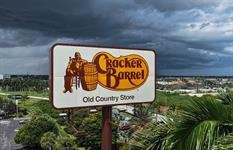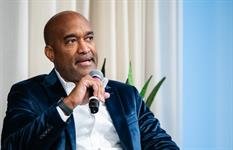The Cracker Barrel rebranding controversy stretched into a second week when the restaurant and giftstore chain bowed to external pressure and did an about-turn on its new logo and branding.
It’s the latest in a string of similar branding controversies that have made their way from the niche worlds of marketing and communications out into the mainstream media via the febrile engagement of the keyboard warriors on social media. Recent examples include American Eagle, Target, Bud Light, Pepsi (featuring Kendall Jenner), Gap and many more.
Cracker Barrel is synonymous with traditional country food such as meatloaf, chicken and dumplings, country fried steak, pancakes and, especially, its biscuits. It’s the type of food your grandmother used to make in certain parts of the U.S. Families would congregate there to eat together and enjoy the ambience, epitomized by peg board games, traditional furniture and an associated gift store.
But the core Cracker Barrel customer is, by definition, dying off or migrating to cities. Like most restaurant chains it has been trying to modernize without losing the essential roots that made it popular in the first place. Think KFC and its effective evolution of the character of the Colonel while sticking to its original fried chicken roots.
In retrospect, maybe the marketing folks at Cracker Barrel had an inkling they were stepping into potentially choppy waters with this activation. The brand and logo refreshes were almost apologetically buried in bullet three of a press release that focused on a new All the More fall campaign featuring country music performer Jordan Davis to “enhance and position Cracker Barrel’s 55+ year heritage for generations to come.”
Bullet three revealed a “thoughtful brand refresh featuring the fifth evolution of its iconic logo and updated visual identity rooted in its signature gold and brown tones.” What the bullet didn’t say was that the “Old Timer” character, modeled after the brand’s Uncle Herschel, and the words “Old Country Store” were not part of the new, minimalist logo, which was cut back to the bare bones.
If you knew the old logo, that was fine and part of your heritage. But if you’re trying to attract the attention of new customers among the melange of brands advertising on road signs when you’re driving by at 60 mph, then the new branding would have been easier to pick out in a hurry in that context. Others, however, just didn’t think the new logo was very good and that it was poorly designed.
This is when the proverbial excrement hit the ventilator and all hell broke loose, with the “go woke, go broke” crowd venting their spleens and the issue making its way to The White House, where President Donald Trump said Cracker Barrel should reinstate its old logo, exploit the publicity and “make millions of dollars.” For better or worse, Cracker Barrel has never had as much attention or endured such scrutiny.
Cracker Barrel’s share price dropped to a low of $54.58 following the rebranding furor and has since bounced back to over $60 following the volte-face. It’s worth noting that the year-to-date low came in April at $35.11, while its year-to-date high was in July at $71.86. All this has to be contextualized by the fact that Cracker Barrel’s share price in July 2019 was $178.53, so clearly something had to be done to revive the fortunes of the ailing restaurant brand.
Sarah Moore, the chain’s CMO, had been out and about last weekend defending the rebranding, emphasizing that the new logo worked across digital, billboards and road signs. But the narrative soon turned when the pressure ramped up, especially from The White House, and Cracker Barrel finally capitulated on Tuesday evening: “Our new logo is going away and our ‘Old Timer’ will return.”
This is certainly not the first time the family restaurant chain founded in Lebanon, Tennessee, in 1969 has experienced reputation crises. In 2004, the Justice Department settled a claim against Cracker Barrel for racial discrimination toward African-American customers and prospective customers based on their race or color.
Now, Cracker Barrel is among brands being targeted by right-wing advocacy group America First Legal, cofounded by deputy White House chief of staff Stephen Miller, aimed at dismantling DEI initiatives at companies and brands.
Over the past week, web archive searches show the restaurant chain has removed information from its website about inclusion relating to Cracker Barrel’s internal business resource groups for veterans, neurodiverse groups, LGBTQ+, Black and Hispanic and Latino employees.
Reading between the lines of customers and staffers posting on social media, it’s possible that Cracker Barrel had slightly lost its way in providing what it became famous for, i.e., simple country cooking and food people associated with their childhoods and family time.
I’ve spoken to people who are definitely going to give Cracker Barrel a try when they wouldn’t have even thought about the brand if it weren’t for the current controversy. You’d have to travel some distance from New York City to find one, though the brand laid on a ‘Taste of Country, Anytime’ event in the city last Thursday, featuring singer and new brand ambassador Jordan Davis.
With a reset and a return to the good, simple and traditional country food it is known for, unencumbered by the furor around the logo and new look, the brand may still be able to capitalize on what it originally set out to achieve with this activation.
Either way, it’s another example of how complicated modern communications, reputation management and consumer marketing is, and how important smart comms strategy and wise PR counsel is in the process.














